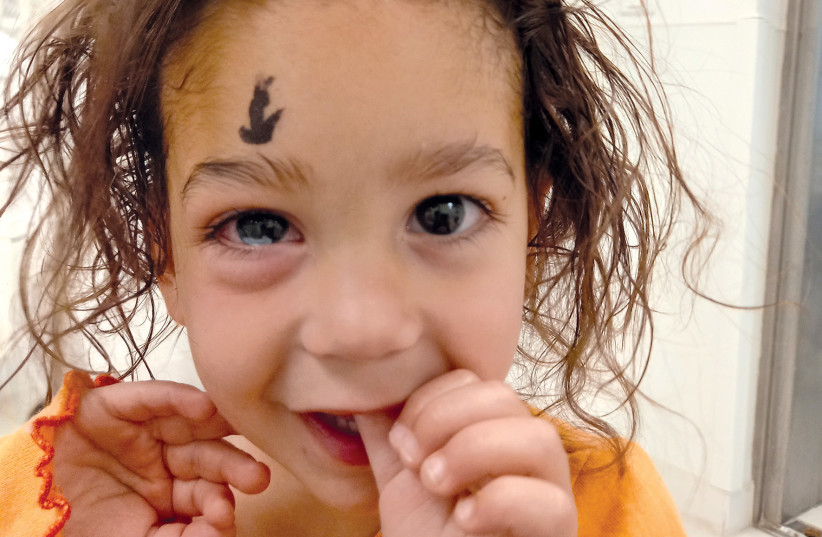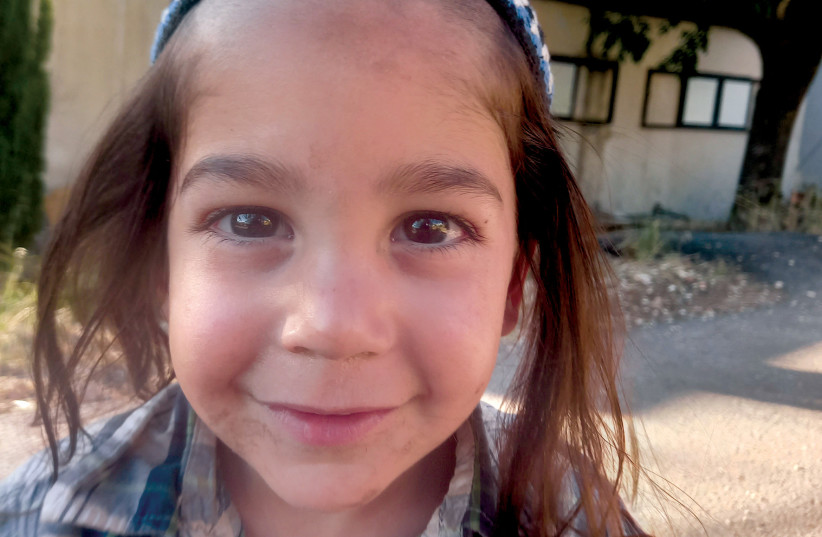A two-year-old boy from Itamar suffered a direct burn in the eye from limestone, which according to all the medical literature, should have ended very badly. Yet, a year after the initial incident, Shimon Porat can see like any other kid.
Some call it a miracle. The miracle worker was an Israeli doctor from Meir Medical Center in Kfar Saba.
Here’s what happened: The Porat brothers, at the time aged two and five, were playing in the limestone around their family’s turkey farm. One brother threw a wad of limestone at the other, with several particles landing in his eye.
The father, Snir Porat, rushed his son to the emergency department, where doctors immediately started washing his eye. Shimon underwent initial surgery during which as much limestone as possible was removed. However, several particles were too small and remained. Because limestone contains calcium hydroxide it burns the eye and can cause the cornea to melt.

“When I saw my son in the hospital, I felt like my whole life ended,” Porat recalled. “No one expects something like this to happen. It was like the sun went dark.”
He described how Shimon was writhing in pain on the hospital table, as doctors prodded his eyes with tweezers and poured washes on the eye to try to save it.
In came Dr. Asaf Friehmann, director of Cornea Services in the Ophthalmology Department at Meir. He performed a unique and unusual, emergency corneal transplant rarely reported in the world, which sealed the opening from the outside and covered it with conjunctival tissue that slowed the progression of the injury and did not expose the toddler to the usual dangers of graft rejection that exist in any type of corneal transplant.
<br>How the eye works
To appreciate what happened, it is helpful to understand the structure of the eye and how it works.
The front and transparent part is the cornea. Behind the cornea is the lens, which is flexible and can change its degree of curvature. When light enters the eye, it enters through the pupil, and is refracted through the lens and the cornea toward the retina, which is located in the posterior of the eye.
The retina is made up of millions of nerve cells and is connected to the optic nerve, which carries the visual information received by the eye to the brain.
The iris is the color tissue that surrounds the pupil. It works like a camera shutter to reduce and expand the pupil depending on the level of light.
Between the retina at the back and the front parts of the eye is the vitreous cavity, a liquid with a transparent gel texture, which makes up about 80% of the eye’s total volume. It fills the eye and is responsible for its rounded shape.
Friehmann’s work is concentrated in the cornea, lens and pupil.

The novelty: A patch
Shimon’s injury was two millimeters under the line of sight, which meant that if the doctors could stop the damage, he would still be able to see. But the prognosis was not good.
Friehmann said that to get all the limestone out, doctors would have had to take the entire interior part of the cornea away, which would mean he would go blind immediately, unless Shimon received a transplant. However, doing a corneal transplant was risky too, because of the high chances of rejection and corneal deformation that would endanger his vision.
“I contacted colleagues from all over the world - London, Italy - and consulted with them,” Friehmann told The Jerusalem Report.
Each offered a different solution, but Friehmann was not comfortable with any of them. Instead, he came up with one of his own.
Friehmann put a patch in front of the cornea. On this patch, he put the child’s own conjunctiva, the very thin layer that is not even seen on the white of the eye unless it becomes red and infected.
“I knew I was going into a war zone inside the eye, but it is known that this tissue can be utilized whenever someone has a bad corneal injury that is not responsive to medical treatment, such as antibiotic treatment, or if the eye is doomed and you want to cover it permanently so the cornea will not be exposed to the outer world anymore but you still want to conserve the structure of the eye.”
Dr. Asaf Friehmann
“I knew I was going into a war zone inside the eye,” he said. “But it is known that this tissue can be utilized whenever someone has a bad corneal injury that is not responsive to medical treatment, such as antibiotic treatment, or if the eye is doomed and you want to cover it permanently so the cornea will not be exposed to the outer world anymore but you still want to conserve the structure of the eye.”
By putting the conjunctiva on, Friehmann encouraged a rejection – but in this case, that was the goal, since the patch was in place. Because the rejection created scarring it could seal the wound, even though the limestone was still active under the corneal patch after Shimon’s second surgery.
“With this intervention we bought precious time and avoided introducing a foreign tissue into his eye,” Friehmann explained. “This is the point of ingenuity. This is the novelty.”
And it worked.
“Dr. Friehmann is an amazing person – he and his whole department,” Porat said. “It was an experiment in some ways, but it was a smart experiment.”
Shimon looks like nothing ever happened. Although he is young and only now learning to read, all indications are that he can see nearly perfectly, if not perfectly. Since conducting the surgery on Shimon, Friehmann said he has done it twice more on adults and shared it with his colleagues around the world.
“Something incredible happened here,” Porat said. “I never thought he would be able to see again, let alone see well. And in the end, he has perfect vision. Thank God, thank God, thank God!” ■
